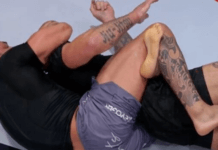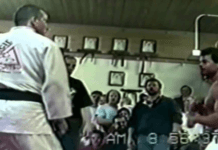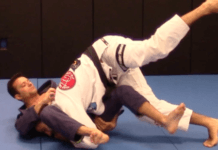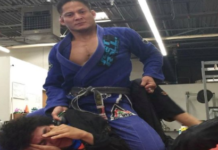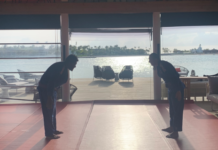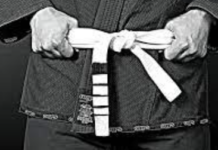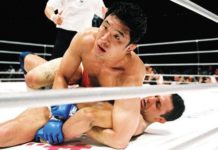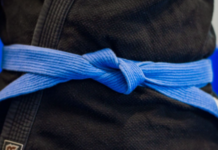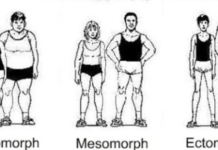BJJ and striking is not a connection you hear often. Sweeps and chokes, that’s the stuff you connect with jiu-jitsu. This does not mean, however, that there is no mention of striking in BJJ at all. In fact, it is even a multi-level topic in jiu-jitsu. On the one hand, questions arise as to whether strikes are allowed or not in BJJ. Others, on the other hand, think they should be allowed and opt to include them in BJJ training. The less drastic think it’s good to combine jiu-jitsu with strikes, but by training other martial arts as well, not by changing BJJ rules. As you can see it is a multi-threaded issue. So that you do not get lost in all this, below you will find everything you need to know about striking in BJJ.
Does BJJ include strikes?
Non-jiu Jitsu practitioners or beginners may ask: can you strike in Brazilian Jiu-Jitsu? The answer to this question is simple. And it sounds no, you can’t strike in BJJ. Striking of any kind is strictly forbidden. The penalty for striking at tournaments is the disqualification. Of course, it is also forbidden in ordinary training. There is no disqualification, but it is unlikely to win you friends, on the mat. BJJ striking is just non-existent as a concept in modern jiu-jitsu. As you can see everything seems easy and simple here. However, the matter is so clear only if we are talking about modern, sport BJJ. If we include the old school jiu-jitsu in the case of striking and BJJ, things get complicated.
Allowing striking in BJJ
As it is stated above, striking is forbidden in sport BJJ. It is a quick disqualification and simply a dick move by general modern standards. However, striking was a huge part of the original Gracie Jiu-Jitsu.
Gracie Jiu-Jitsu
Back in the days knowing how to punch and kick was just as important as knowing how to choke or sweep someone. It is because in the beginning jiu-jitsu was all about self-defense. And according to the Gracie family and old way followers, it should still be like that. This means that BJJ should also include strikes, or at least the ability to defend against them.
Therefore in this style of jiu-jitsu, your training includes standard stuff like breaking posture and controlling the opponent’s body to apply armlocks, chokes, sweeps, etc. However, at the same time, you also learn how to wrap up the opponent to prevent punches and head butts. Gracie Jiu-Jitsu is just supposed to be a complete martial art. It means in old-school style classes you will add punches into your grappling, train full-contact clinching and takedowns against a striker. In one of the podcasts Rener Gracie even said that “if your jiu-jitsu training doesn’t frequently include striking, you’re not doing Gracie Jiu-Jitsu”.
Eddie Bravo
As Rener, most of the Gracie family members are still very keen on BJJ with striking as a concept to this very day. However, they are not the only fans of combining jiu-jitsu with strikes. Eddie Bravo is another grappler opting for integrating striking into your BJJ training. This is due to his insistence that BJJ should be trained for MMA. To that extent, he created Combat Jiu-Jitsu, which is pretty much grappling with strikes. In his concept, the striking is open hand only, but it is still more than enough.
Supplementing BJJ with striking martial arts
When it comes to BJJ and strikes, there is also another approach. It is the most centered one. It does not incorporate kicks and punches into BJJ, but it does encourage training other striking martial arts besides jiu-jitsu. Thanks to this approach, you will become a well-rounded martial artist, with both grappling and striking skills.
If you want to be the greatest sport BJJ champion and win competitions such as IBJJF European or world championships you probably don’t need to know how to kick and punch. However, if you started Brazilian Jiu-Jitsu to learn how to self-defense or compete in MMA later in your career, training striking martial arts will be a good idea for you. Examples of some good styles to cross-train in are Boxing, Kickboxing Muay Thai.
Why it is good to incorporate striking into your BJJ?
If you only want to train BJJ, that’s fine. We all know BJJ is the king of fighting on the ground. Transitions are seamless, submissions are devastating, and the ability to defend yourself against a larger attacker on the ground is second to none. So, what is the point in adding strikes to your repertoire of skills? It is because, all fights start standing, both sports and less fair ones.
Of course, this is where you can use takedowns. However, if you can’t do this, using proper, stable footwork, with the addition of strikes is another great alternative to force the opponent to defend and later take him to the ground. Knowing how striking works just give you an advantage in closing the distance between you and your opponent. Moreover, if you do make it to the clinch, knowing how to strike from it can open another person up and allow you to enact a takedown, taking the fight to your comfort zone.
Let’s be real strikes just come in handy when it comes to the real fight. Of course fighting in the street, not according to any sports rules, is really shitty, and it is better that no one has to take part in it. Unfortunately, different things happen in life, and such a situation can also happen.
So, especially when third parties are present, one does not want to find themselves grappling on the floor. They may attack you while you are tangled up on the ground. Of course, yes, there is no good martial art for fighting multiple people, only strategies that may work. However, one good strategy is using striking, moving from one target to the next until you have knocked them all out, or more realistically, created an opening to run away. And that is exactly why you should consider supplementing your BJJ with striking martial arts. It is good to know them just in case.


